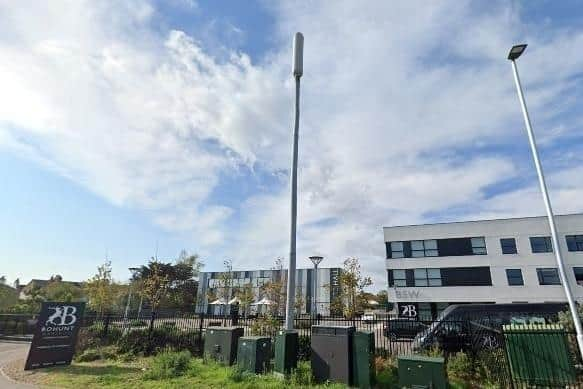Campaigners abandon legal challenge to Worthing 5G mast near school
and live on Freeview channel 276
A crowdfunding page was launched to challenge Worthing Borough Council after it granted planning permission for a 5G enabled mast outside Bohunt school in March.
But campaigners had to abandon legal action after failing to raise the money needed.
Advertisement
Hide AdAdvertisement
Hide AdPaula Mitton, founder of 5G Action West Sussex, said: “We had to make the decision not to go ahead with a judicial review and close the Crowd Justice site.


“This is because there is a very short time span to apply for a judicial review following a planning decision.
“We would have had to raise at least £20,000 in less than this time.
“It took a long time to find a suitable solicitor and then we would have needed a barrister as well.”
Advertisement
Hide AdAdvertisement
Hide AdAnti-5G campaigners were concerned about the mast’s proximity to Bohunt, claiming that it could ‘affect the health of pupils’.
But MBNL – the company jointly owned by Three and EE which will install the mast – said that radio frequency power outputs are kept to ‘the lowest levels possible’ while ‘still providing an effective service’.
A planning statement reads: “The upgrade is required to provide increased 4G coverage and capacity and ensure that the mast is ready for 5G.”
5G uses radio waves at slightly higher frequencies than its predecessors 3G and 4G to provide faster connectivity, which is of concern to those who campaign against the technology.
Advertisement
Hide AdAdvertisement
Hide AdBut the signals are ‘non-ionizing’ – meaning that they can not damage DNA inside cells – and Public Health England has said there is no ‘convincing evidence’ that it is harmful if it remains below current guidelines.
A BT spokesperson said: “We’d point any concerned residents to study reliable sources of information from established research bodies.
“No health risks have been established from use of mobile phone technology and exposure to the low-level radio signals used for it, even though mobile networks have existed since the 1980s and the radio technology used is fundamentally the same.
“This has been the repeated result from a number of studies conducted over several years.”